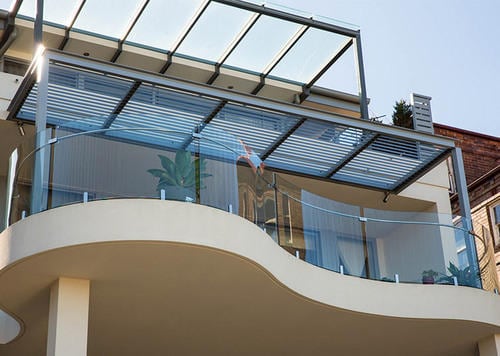If you look up at the skyline of any large, American city, you’ll notice that there’s glass everywhere. That’s because, for over a century, architects have privileged glass and steel construction, despite the style’s notable inefficiencies, with the United Nations Secretariat building in New York City one of the most influential examples of such construction. Built between 1947 and 1952, the United Nations was the first fully air-conditioned building with a glass curtain wall. Residential and commercial towers in the style followed soon after.
Today, we think of glass as a core element of contemporary design. It’s often included in the spare, open styles associated with high modernism – but it’s falling out of style due to concerns about sustainability. Glass walled buildings require an enormous amount of energy to heat and cool. That doesn’t mean glass elements are likely to disappear entirely. Rather, as designers and investors begin to think critically about the function of glass, they’re pushing other innovative applications that don’t compromise the building’s function.

Beautiful Balconies
One of the most common ways architects are using glass today is to enhance balcony design, specifically by creating a glass front. The glass serves as an alternative to other types of fencing or balcony guard, and it requires less far less maintenance than metal bars, which tend to corrode over time. Glass balcony fronts also provide for an unimpeded view and the glass is carefully engineered for minimal breakage, making it a perfectly safe option, even when used on especially high balconies. Overall, glass balcony fronts offer a high-end, aesthetically pleasing alternative to more conventional balcony enclosures.
Enjoying The View
As noted above, glass elements are popular with designers and end users in part because they create an unimpeded view – which is great if you’re in an especially beautiful location, but less relevant in cities. For example, this beautiful and terrifying floating cabin uses glass walls as exterior walls so that residents essentially hover in the air, making it seem as though they could fall into the Atlantic at any second. It’s extraordinary, but extreme.
A more conventional application of glass that’s still designed to enhance the view from a property are glass railings. Glass railings work for both interior and exterior applications, revealing the lower level of an open, high-ceilinged home or the vistas outside an isolated property. Like glass balcony barriers, these railings are made from specialty glass, making them perfectly safe, and they can be mounted in a variety of ways depending on the particular needs of the space.
Glass Gets Smarter
While designers are phasing out glass as exteriors, it’s possible new technology could solve some of the problems – like heating and cooling inefficiencies – that have pushed glass to the margins of industrial design. In particular, innovative tech professionals are developing smart façade technology. Right now, that primarily involves developing self-cleaning glass, but there are also groups working on homeostatic facades that could regulate building temperature. Such solutions will obviously be more expensive than conventional glass, but would likely lead to long-term savings on energy.
Iconic Alternatives?
Though glass may not be a popular exterior for new construction, certain glass buildings are sure to remain iconic. Unlike the original source of inspiration, the United Nations building, however, today’s aesthetic mainstays are largely temples to capitalism. Apple has been constructing glass stores for years, in cities all around the world. It’s a recognizable aspect of their brand, and meshes well with the company’s product aesthetics, but maybe it’s time for Apple to rethink their iconic look. Glass has many functions in architecture, but as a complete exterior, this style may have reached the end of its lifecycle.















